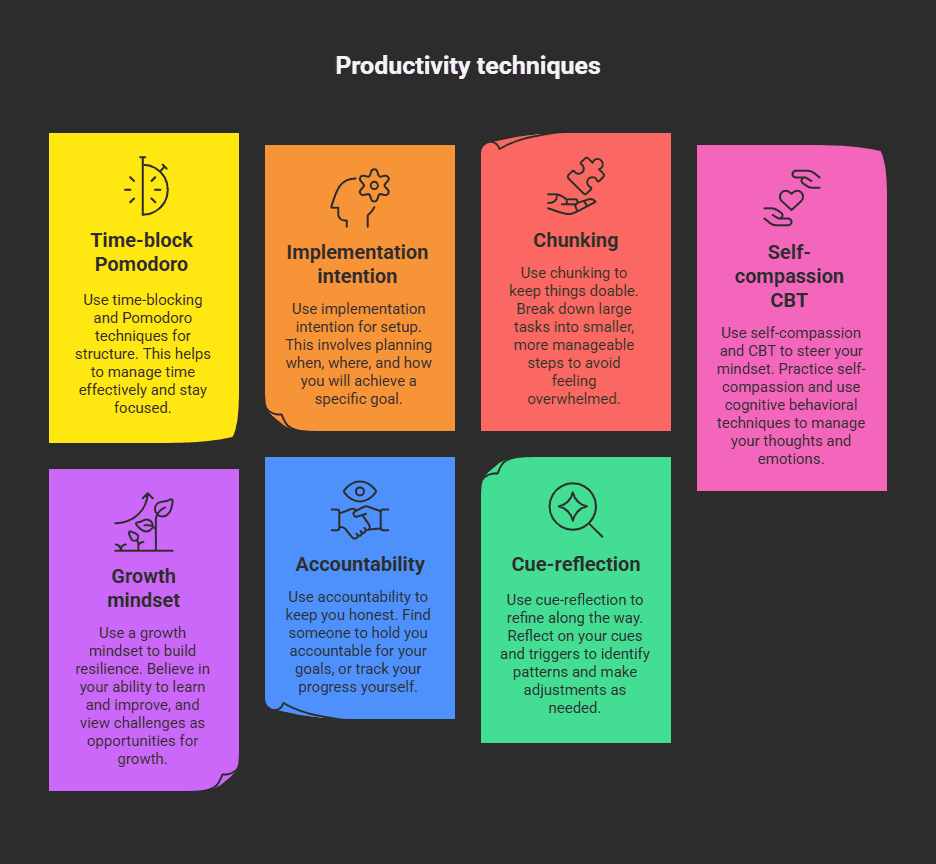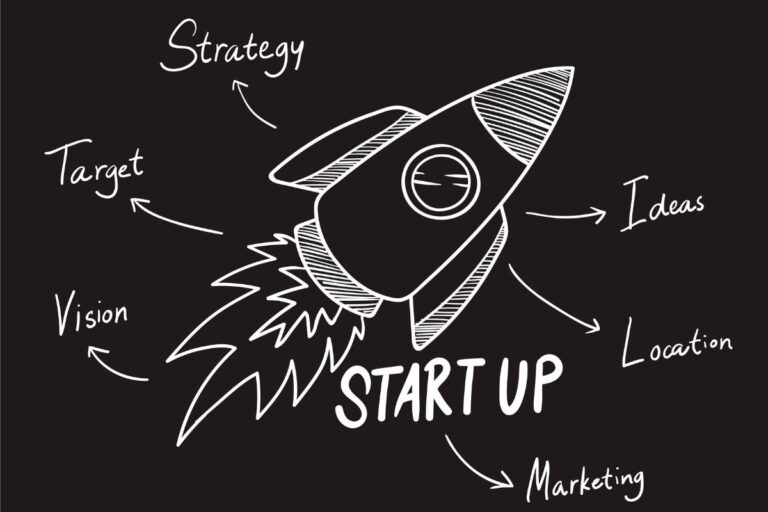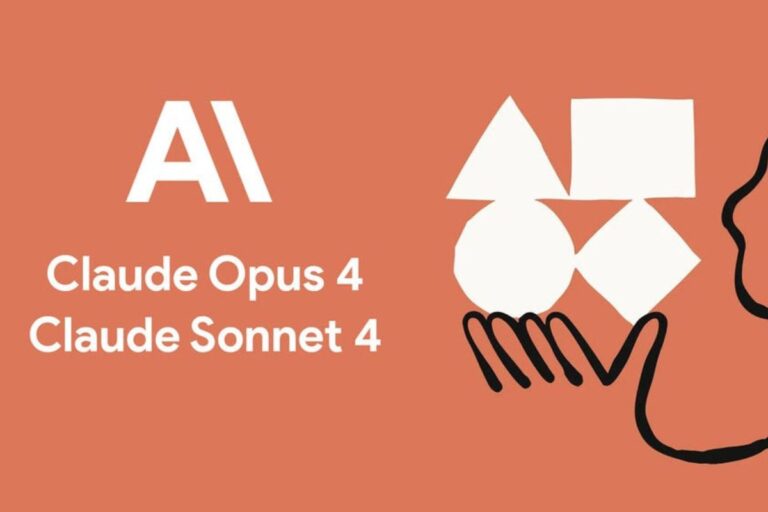You’re scrolling through memes at 2 p.m. (“just five more minutes…”). Suddenly, it’s 4 p.m. Panicky sweat sets in. “Oh no, where’d the afternoon go?” Relatable. We’ve all been there. But guess what? You don’t have to keep living this way.
This post? It’s your toolkit. Stuff you can use, right now. No fluff. No “mañana” nonsense. Because procrastination isn’t just a productivity problem, it’s emotional, cognitive, and even biological. We’re talking real research, real solutions. And yeah, they’ll work.
1. Pomodoro Technique: Focus in Bursts
Quick summary: 25 minutes of laser focus on one task, followed by a 5-minute break. Repeat 4 times, then take a longer break (15–30 mins). It’s simple and effective.
Why it works: It limits fatigue, distraction, and decision-making. A 25‑minute sprint feels doable, less mental inertia, more dopamine-ish reward when you hit ‘pause’. Seriously, who doesn’t love crossing off a Pomodoro?
How to implement today:
- Pick a task.
- Set a 25‑minute timer.
- Work only on that.
- When it ends, stop. Take 5.
- After four cycles, a longer rest.
Bonus: Customize, it can be 15+10 or 50+10. The point is bite-sized work, intentional breaks, and predictable structure. No more “I’ll just check email.”
2. Time‑Blocking / Time‑Boxing: Schedule Your Brain
Time-blocking is like GPS for your day. You plot where to go, hour by hour (or Pomodoro by Pomodoro). No drifting.
Pair it with Pomodoro for brain magic.
Get started:
- On Sunday night, sketch your week on a calendar.
- Assign blocks (“9–11 Writing project”).
- Use Pomodoro within each block.
This clarifies your day and reduces friction. No decision fatigue, you don’t have to decide when to work. You just do.
3. Implementation Intentions: If‑Then Power
Ever said “I’ll work on that later”? That’s fuzzy. Implementation intentions are crisp:
- “If it’s 9 AM, then I start Task A.”
- “When I sit at my desk, I will open the outline.”
This connects triggers with behaviors, making action almost automatic.
Applying it now:
- Choose a task and time.
- Write an if‑then plan on paper or an app.
- Stick it somewhere visible.
E.g., “If it’s Tuesday at 3 PM, I’ll work on my report for 25 minutes.” Boom, mental wiring upgraded.
4. Chunk It Down: Tiny Steps, Big Momentum
Overwhelm kills action. A 10,000-word report? Yawn.
A 100‑word section? Much less scary.
Action:
- Break tasks until each feels bite-sized.
- Label them: “Draft intro,” “Insert data for Table 2.”
- Each chunk fits into one Pomodoro, or less.
Feeling aimless? You’re doing too much at once.
5. Decision Reduction & Routines
Humans have limited brain juice. The more trivial choices, the sooner you crash.
Setting routines helps reduce daily decisions.
Tip:
- Pick your clothes/work plan the night before.
- Schedule workout slots in your week.
- Plan email and admin tasks in fixed blocks.
You’ll wake up ready to work, not to decide if you’re going to.
6. Self‑Compassion: Beating Guilt with Kindness
Procrastination isn’t just laziness, it’s tangled with shame and perfectionism. Treating yourself harshly backfires.
Try this:
- Noticed guilt? Say: “This sucks, but it’s okay.”
- Shift from shame to empathy.
- Tell yourself: “Even if I screwed up, I can start now.”
Be gentle. It works because when you’re nice to yourself, you start.
7. Growth Mindset: Embrace Effort, Not Labels
Carol Dweck’s growth mindset, “I can learn”, helps you face fearful tasks instead of hiding.
Fix:
- Replace “I’m bad at X” with “I can improve with practice.”
- Reflect: “What did I learn?” rather than “I failed.”
Less fear = less delay.
8. Cue & Reflect: Build Self‑Awareness
Know your rhythm. Are you sharp at 8 AM? Groggy midday?
Tracking helps reveal patterns:
Try this:
- Record task, time, and interruptions.
- At week’s end, note energy spikes/crashes.
- Adjust the schedule accordingly.
Recognizing patterns is power.
9. Accountability: Share the Plan
Keeping it private? Chances are, you’ll drift.
But sharing, a small commitment, makes it stick. Whether it’s a friend, a coworker, or an accountability buddy.
Do this:
- Send a “I’ll write 500 words by 10 AM tomorrow” message.
- Or join a timer session with a colleague.
- Or even post publicly (“Time to start my first Pomodoro”).
It works, amazingly motivating when someone’s expecting you.
10. Cognitive Behavioral Techniques: Tackle Thoughts
Procrastination isn’t just about behavior, it’s a mindset. Cognitive Behavioral Therapy (CBT) techniques can help.
Quick CBT technique:
- Spot a thought: “I can’t do X.”
- Question it: “Is that true?”
- Replace: “I can do this in small steps.”
It slows the spiral and flips the script in real time.
How It All Fits Together

It’s not about picking one. These tools layer in.
- Time‑block + Pomodoro for structure.
- Implementation intention for setup.
- Chunking to keep things doable.
- Self‑compassion + CBT to steer your mindset.
- Growth mindset to build resilience.
- Accountability to keep you honest.
- Cue‑reflection to refine along the way.
View each as a tool, not a rigid system. Use what fits your life. Tweak as you go.
Let’s Be Real
You might read this and feel… pressured. Like: “I should do all this.” But here’s the thing: even one tweak, a Pomodoro today, a single if‑then plan, can break the cycle. Give it a try for a week. See yourself improve. Then add another tool. And another.
Progress is messy. But it’s electric.
Why This Matters
Procrastination isn’t trivial:
- It wrecks productivity.
- It racks up stress.
- It deepens self-doubt.
But we can rewrite the pattern. With tools rooted in research and grounded in real life. You slip wrong? Try again. Each tiny success builds momentum.
Final Talk
Look, you’re not lazy. You’re human.
You’re juggling burnout, anxiety, perfectionism, and distractions.
These strategies? They don’t just “make you do things.” They nudge your brain, reshape your routines, and build resilience so you can do your best work.































